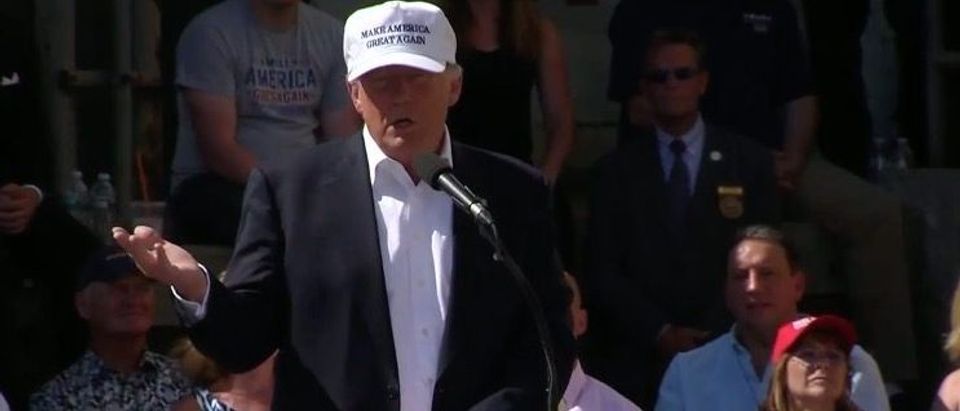Donald Trump’s trade speech this week was an eye-opener for me. It was the first time a politician spoke realistically about trade policy, instead of the globalist nostrums we’ve heard from both parties for decades. Plus: he spoke knowledgeably about using enforcement tools that are already available under U.S. law – tools that, frankly, administrations of both parties have avoided using.
Here’s an example: in the Clinton Administration I was a career civil servant and a member of a panel convened by the U.S. Trade Representative to compile an annual report on countries that were violating our intellectual property rights. This could range from pirating software, technology, high-end designer goods and more. Under U.S. law (nicknamed ‘Special 301’), the president could take punitive action by imposing tariffs on imported goods from the bad-actor country.
Why was Special 301 important? Knowledge workers and fashion designers, including entrepreneurs in the high tech sector can make money only if they are paid for what they produce. Intellectual property violators adopt a more Marxist view that ‘property is theft’ and freeload off of other’s work. Because the freeloaders aren’t paying royalties to the developers and designers, they can charge less for Product X than a firm that’s producing the same product but is playing by the rules.
The annual report our group issued ranked countries by the severity of their violations. China was regularly at the top of the list (China had not yet been admitted to the World Trade Organization). Did the Clinton Administration ‘pull the trigger’ and invoke Special 301 sanctions against China? Never.
China always received a vigorous tut-tut, and could expect more tuts in the next year’s report. This pattern continued in the George W. Bush and Barack Obama administrations.
Imagine the China’s reaction to the report: can you hear the laughter?
The pushback to pulling the trigger always arose from trade groups and their friends at the State Department who believed the overall negative impact of limiting imports from China outweighed the protection of intellectual property. A President Trump would change that mindset, obviously.
Trump also was right to propose having the Commerce Department research existing trade laws with a view to finding the enforcement tools that would be at his disposal.
Part of getting trade legislation passed on the Hill involves inserting enforcement provisions in the bill. The provisions are to help the Member of Congress sell the legislation back home — ‘if they cheat, we can go after them!’ However, as we’ve seen with Special 301, there was always a reason, usually arising from the State Department, why punitive action could not be taken this year or next year and so on.
On the Democrats’ side, their pitch to offset any harms in a trade agreement has always been for more job training (provided by unions and community colleges). In 2011, the Government Accountability Office found 47 separate federal job training programs. Today it seems Hillary Clinton believes 47 programs are not enough.
However, as this graph from the Bureau of Labor Statistics indicates, U.S. workforce population has declined dramatically since then-President Bill Clinton pushed to have China enter the World Trade Organization and opened U.S. markets to Chinese goods. Those 47 training programs have done nothing to ameliorate the massive job losses to China – which became a WTO member in late 2001.

Source: Bureau of Labor Statistics, U.S. Department of Labor, June 2016
The workforce participation graph says it all: America desperately needs a ‘reset’ on our trade policy and philosophy – not more useless training programs.
Trump’s speech shows his determination to end the globalist mindset in trade that currently exists among many Republicans and some Democrats.


